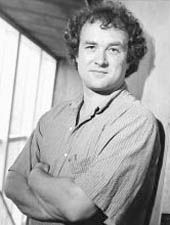Flint, A. J., Gebbink, M. F., Franza, B. R., Hill, D. E., Tonks, N. K. (May 1993) Multi-site phosphorylation of the protein tyrosine phosphatase, PTP1B: identification of cell cycle regulated and phorbol ester stimulated sites of phosphorylation. Embo Journal, 12 (5). pp. 1937-1946. ISSN 0261-4189
Abstract
The non-transmembrane protein tyrosine phosphatase, PTP1B, comprises 435 amino acids, of which the C-terminal 114 residues have been implicated in controlling both localization and function of this enzyme. Inspection of the sequence of the C-terminal segment reveals a number of potential sites of phosphorylation. We show that PTP1B is phosphorylated on seryl residues in vivo. Increased phosphorylation of PTP1B is seen to accompany the transition from G2 to M phase of the cell cycle. Two major tryptic phosphopeptides appear in two-dimensional maps of PTP1B from mitotic cells. One of these comigrates with the peptide generated following phosphorylation of PTP1B in vitro at Ser386 by the mitotic protein Ser/Thr kinase p34cdc2:cyclin B. The site of phosphorylation that is responsible for the pronounced retardation in the electrophoretic mobility of PTP1B from mitotic cells has been identified by site directed mutagenesis as Ser352. The identity of the kinase responsible for this modification is presently unknown. We also show that stimulation of HeLa cells with the phorbol ester TPA enhances phosphorylation of PTP1B. Two dimensional phosphopeptide mapping reveals that the bulk of the phosphate is in a single tryptic peptide. The site, identified as Ser378, is also the site of phosphorylation by protein kinase C (PKC) in vitro. Thus the TPA-stimulated phosphorylation of PTP1B in vivo appears to result directly from phosphorylation by PKC. The effect of phosphorylation on the activity of PTP1B has been examined in immunoprecipitates from TPA-treated and nocodazole-arrested cells. TPA treatment does not appear to affect activity directly, whereas the activity of PTP1B from nocodazole-arrested cells is only 70% of that from asynchronous populations.
Actions (login required)
 |
Administrator's edit/view item |



